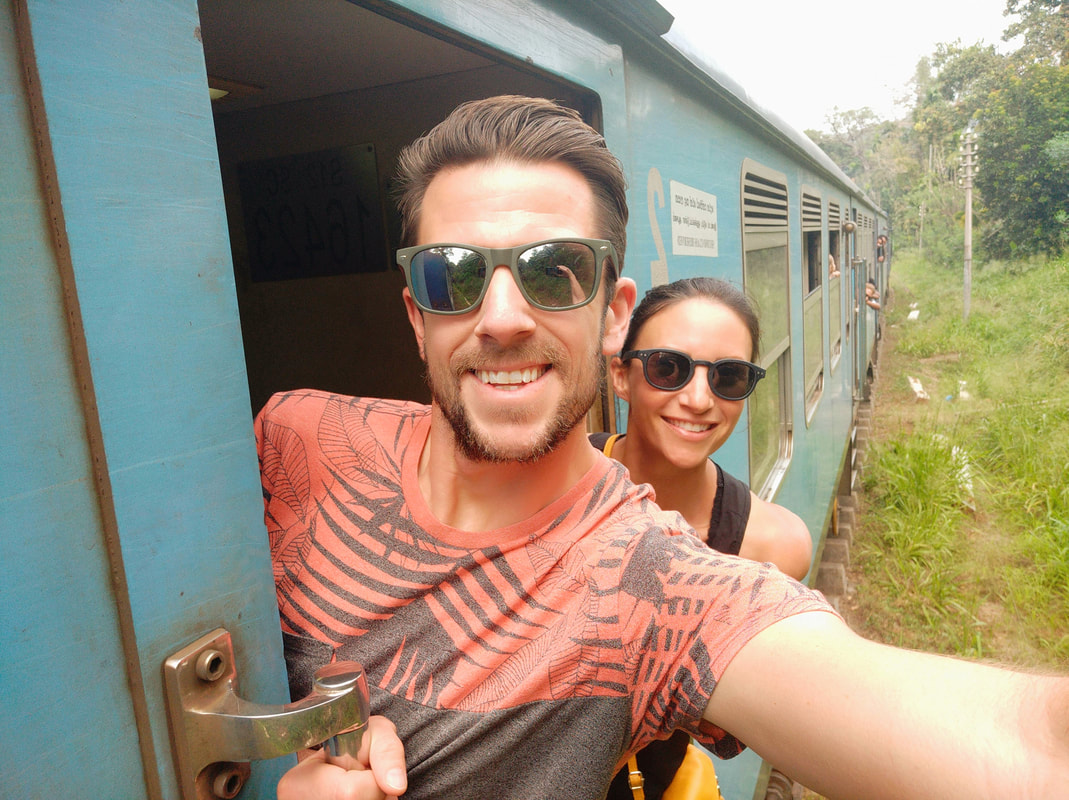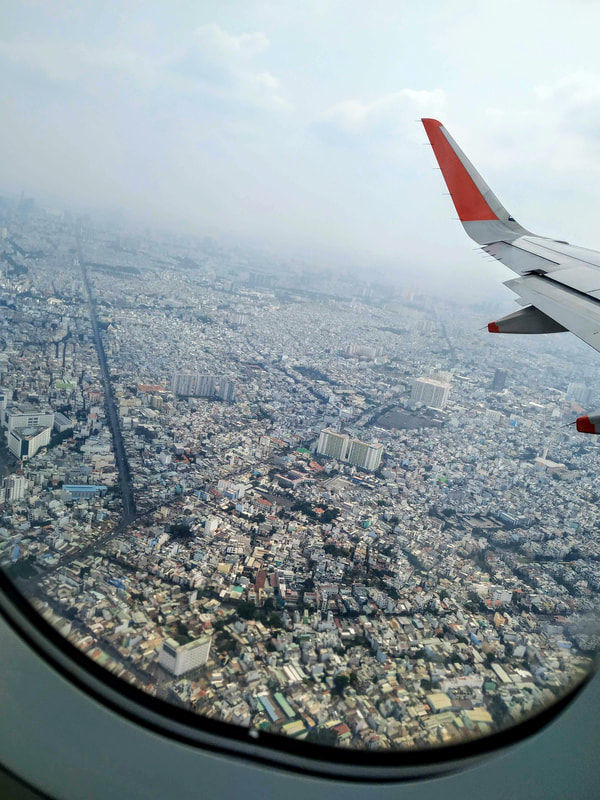|
We had two goals for our August escape this year: 1) check out some places we’ve never been before and 2) spend more time by the sea. With a little over a month to work with and a road trip in mind, we still weren’t sure where to go. One region, surprisingly close to our home in Lucca (at least as far as European road trips go) that we’d been contemplating for years yet still felt foreign and strangely elusive, came to mind - the Balkans.
0 Comments
Five years ago, newly engaged, with a newly incorporated business and a shiny new Italian passport in hand, we packed up six suitcases and boarded a one-way flight to Spain. Through a combination of adventurous spirit and complete naivete, we landed in Valencia, a city we’d visited once before, for less than a week. Three and a half years later (clearly haven forgotten how hard the first year in a new country was), we moved again, to our now home in Lucca, Italy.
When we started Cohica five years ago, amid a nearly year long trip around the world, one of our main goals was to spotlight sustainable and socially responsible travel. I was just two years removed from an MBA in Sustainable Business, and Megan had just left her Director-level position at the Fairmont Kea Lani Maui where she’d worked closely on the hotel’s burgeoning sustainability initiatives. Along the way, we found ourselves constantly asking how the life-changing travel experiences we were having could have an even more positive effect on the communities that served as their foundation. So we started to meet with local business owners and sustainable tourism program managers, curious as to how international travel and tourism could provide long-term, sustainable economic development, preserve local cultures, and minimize environmental degradation. We wrote story after story, promoting responsible travel companies and, in 2016, when we first launched Cohica as a travel design agency, made sustainable travel a primary focus of our growing business.
After a devastating year for international travel in 2020, there are promising signs for a return to exploration and adventure in 2021. Nations across the globe have begun mass vaccination campaigns with hopes of mitigating and eventually eliminating COVID-19. In the U.S especially, vaccination efforts are quickly ramping up, with plans to inoculate every American by August as the number of cases, deaths and hospitalizations continue to decrease each day.
A not-so-insignificant part of these efforts will be to create safe and healthy travel experiences for international tourists. Since late December, Delta and Alitalia have been offering “Covid-free” flights from Atlanta to Rome, allowing visitors to bypass quarantine upon arrival in Italy. With the addition of coordinated vaccine or testing programs like this, we’re very optimistic that European borders will open to American visitors by summertime. While we hope international travel will be completely secure in the latter half of the year, there will surely be some lingering Covid concerns among travelers. After more than a year of social distancing, mask wearing, and plenty of self-isolation, we’ll all want to feel safe and comfortable as we explore new places and share new experiences abroad. That being said, our criteria for selecting the best destinations and travel experiences are, (1) Outdoor experiences and natural beauty, (2) Effective local health and safety protocols, and of course (3) Low (or no) infection rates. With these factors in mind, we’ve crafted a list of our top eight destinations for 2021. We have a tradition. Every year during the first few weeks of January, we sit down together to create our travel wishlist for the year ahead. It’s become somewhat of a ritual - opening a good bottle of wine, reflecting on last year’s adventures, breaking out the new year’s calendar and consulting our travel fund to determine which trips we can make a reality. But this year is different.
Until last March, we hadn’t gone more than six weeks without traveling. Now, after nearly nine months with very little exploration, we’ve been reminded that open borders and cultural integration is a privilege that we’ll never again take for granted. The absence of travel has slapped us in the face with the realization of how much we love it. It’s not just our hobby, or our business, or a good vacation or a way to escape everyday life. It enriches us, opens our minds and brings us joy. The rush of excitement and anticipation we feel when we touch down in a new country… well, there’s no feeling in the world like it. This, combined with nurturing the friendships and relationships that are most important, is our focus in 2021. So with new perspective (and a lot of time on our hands), we’ve created our 2021 Travel Wishlist. And we are ready to go. The Second Wave & A New LockdownIt’s officially December and 2020 is almost over. After nearly six months of relative normalcy, Italy returned to various states of lockdown a month ago. The strict quarantine measures of March and April precluded extremely low COVID numbers throughout the course of the summer, allowing us to travel across four different regions, meeting with partners and visiting hotels in preparation for our Italian Origins small group trip next fall. In September, we flew to the Greek Isles and spent a week hiking and swimming all over the tiny island of Symi and discovering the thickly layered history of Rhodes. It was an amazing trip and we’re thankful that Italy, and Europe’s, serious response to the pandemic in those early months allowed us the opportunity to travel a bit this year.
But here we are again. A second wave has swept over Europe and Italy has once again responded with significant measures. We started as a Zona Gialla (yellow zone) in early November - the lowest in severity of Italy’s three-tier zone system - but became a Zona Arancia (orange zone) within a week, and then a Zona Rossa (red zone) just a few days later. Lively and bustling streets criss-cross Parma’s Romanesque architecture and pastel-hued buildings. Its status as a university city is to thank for this, but we’re not here for class. No, we’re here for the food.
Because of its location in the center of the fertile Po Valley, in north central Italy, the Emilia Romagna region has been the country’s foodie capital for centuries. Parma in particular, became the epicenter of this gastronomical powerhouse due to its production of world class and world famous eats. Most notably, Parmigiano Reggiano cheese and Prosciutto di Parma ham. Along with Traditional Balsamic Vinegar from nearby Modena, these products can only be made in this specific part of Italy, and therefore the world. And although you can find cheap imitations from other places, they are definitely not the same. Trust us. The beauty here is mesmerizing. One person after another sits and stares across the water’s surface. No phones, no distractions. Just gazing at the forested cliffs and colorful towns on the other side. It’s nice; peaceful even. This view is the kind that pulls you in, forces you to stop, makes you breathe a little deeper, and offers a little break from the current state of the world.
We’ve made the 4 hour drive north from Lucca, passing through the Apennine Mountains and the Emilia Romagna region, before arriving at the incredible Lake Como in Lombardy. We’re here to find the perfect hotel for the final stop on next year’s Italian Origins small group trip. Our three days here are jam-packed with meetings and hotel tours, and we constantly have to remind each other that we’re here for work - A not-so-easy task with views like these. Skipping down the narrow, olive tree-lined road toward Greve, we can hardly contain this euphoric feeling. The sun is about to set over the endless rolling hills of Chianti and the golden hour light glows against the rows of vineyards that extend as far as the eye can see in either direction. These hills baked today, as the temperature rose to nearly 100 degrees fahrenheit, preparing the grapes for their inevitable September harvest. After a day of driving all around the region, meeting with hotels and agriturismos, the setting sun brings a welcomed respite.
Mark Twain once described Florence as a “city of dreams.” We’re standing on the rooftop terrace of Antica Torre di via Tornabuoni 1, a medieval tower and boutique hotel dating back to the year 1200, and are completely on board with his assessment. Layers of red terracotta tiled roofs give way to ancient palaces, marble porticos, and the incredible Duomo of the Cathedral of Santa Maria del Fiore. We’re completely aware that many people dream of seeing this view once in a lifetime and are filled with equal parts gratitude and awe at the beauty of the Tuscan capital. It’s these moments that remind us why we started Cohica - to share a slice of this magic with travelers - and over the next 48 hours, we’re on the hunt for the perfect Florentine hotel, rooftop restaurant and city guide for the first night of our Italian Origins small group trip.
|
Cohica TravelA travel design agency. Categories
All
Archives
October 2023
Follow us on Instagram @CohicaTravel
|



 RSS Feed
RSS Feed
